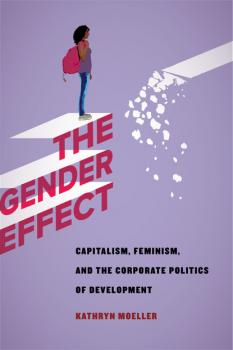MREADZ.COM - много разных книг на любой вкус
Скачивание или чтение онлайн электронных книг.Robo sapiens japanicus
Japan is arguably the first postindustrial society to embrace the prospect of human-robot coexistence. Over the past decade, Japanese humanoid robots designed for use in homes, hospitals, offices, and schools have become celebrated in mass and social media throughout the world.  In <I>Robo sapiens japanicus,</I> Jennifer Robertson casts a critical eye on press releases and public relations videos that misrepresent robots as being as versatile and agile as their science fiction counterparts. An ethnography and sociocultural history of governmental and academic discourse of human-robot relations in Japan, this book explores how actual robots—humanoids, androids, and animaloids—are “imagineered” in ways that reinforce the conventional sex/gender system and political-economic status quo. In addition, Robertson interrogates the notion of human exceptionalism as she considers whether “civil rights” should be granted to robots. Similarly, she juxtaposes how robots and robotic exoskeletons reinforce a conception of the “normal” body with a deconstruction of the much-invoked Theory of the Uncanny Valley.<BR /><BR />  <BR />  
Owners of the Map
On May 19, 2010, the Royal Thai Army deployed tanks, snipers, and war weapons to disperse the thousands of Red Shirts protesters who had taken over the commercial center of Bangkok to demand democratic elections and an end to inequality. Key to this mobilization were motorcycle taxi drivers, who slowed down, filtered, and severed mobility in the area, claiming a prominent role in national politics and ownership over the city and challenging state hegemony. Four years later, on May 20, 2014, the same army general who directed the dispersal staged a coup, unopposed by protesters. How could state power have been so fragile and open to challenge in 2010 and yet so seemingly sturdy only four years later? How could protesters who had once fearlessly resisted military attacks now remain silent?<BR />  <BR /><I>Owners of the Map </I>provides answers to these questions—central to contemporary political mobilizations around the globe—through an ethnographic study of motorcycle taxi drivers in Bangkok. Claudio Sopranzetti advances an analysis of power that focuses not on the sturdiness of hegemony or the ubiquity of everyday resistance but on its potential fragility and the work needed for its maintenance.
Out of War
Out of War draws on Mariane C. Ferme’s three decades of ethnographic engagements to examine the physical and psychological aftereffects of the harms of Sierra Leone's civil war. Ferme analyzes the relationship between violence, trauma, and the political imagination, focusing on “war times”—the different qualities of temporality arising from war. She considers the persistence of precolonial and colonial figures of sovereignty re-elaborated in the context of war, and the circulation of rumors and neologisms that freeze in time collective anxieties linked to particular phases of the conflict (or “chronotopes”). Beyond the expected traumas of war, Ferme explores the breaks in the intergenerational transmission of farming and hunting techniques, and the lethal effects of remembering experienced traumas and forgetting local knowledge. In the context of massive population displacements and humanitarian interventions, this ethnography traces strategies of survival and material dwelling, and the juridical creation of new figures of victimhood, where colonial and postcolonial legacies are reinscribed in neoliberal projects of decentralization and individuation.
On the Road of the Winds
The Pacific Ocean covers one-third of the earth’s surface and encompasses many thousands of islands that are home to numerous human societies and cultures. Among these indigenous Oceanic cultures are the intrepid Polynesian double-hulled canoe navigators, the atoll dwellers of Micronesia, the statue carvers of remote Easter Island, and the famed traders of Melanesia. Decades of archaeological excavations—combined with allied research in historical linguistics, biological anthropology, and comparative ethnography—have revealed much new information about the long-term history of these societies and cultures. <I>On the Road of the Winds</I> synthesizes the grand sweep of human history in the Pacific Islands, beginning with the movement of early people out from Asia more than 40,000 years ago and tracing the development of myriad indigenous cultures up to the time of European contact in the sixteenth to eighteenth centuries. This updated edition, enhanced with many new illustrations and an extensive bibliography, synthesizes the latest archaeological, linguistic, and biological discoveries that reveal the vastness of ancient history in the Pacific Islands.
The Anthropology of Sport
Few activities bring together physicality, emotions, politics, money, and morality as dramatically as sport. In Brazil’s stadiums or China’s parks, on Cuba’s baseball diamonds or Fiji’s rugby fields, human beings test their physical limits, invest emotional energy, bet money, perform witchcraft, and ingest substances. Sport is a microcosm of what life is about. <I>The Anthropology of Sport</I> explores how sport both shapes and is shaped by the social, cultural, political, and historical contexts in which we live. Core themes discussed in this book include the body, modernity, nationalism, the state, citizenship, transnationalism, globalization, and gender and sexuality.
Big Sur
Big Sur embodies much of what has defined California since the mid-twentieth century. A remote, inaccessible, and undeveloped pastoral landscape until 1937, Big Sur quickly became a cultural symbol of California and the West, as well as a home to the ultrawealthy. This transformation was due in part to writers and artists such as Robinson Jeffers and Ansel Adams, who created an enduring mystique for this coastline. But Big Sur’s prized coastline is also the product of the pioneering efforts of residents and Monterey County officials who forged a collaborative public/private preservation model for Big Sur that foreshadowed the shape of California coastal preservation in the twenty-first century. Big Sur’s well-preserved vistas and high-end real estate situate this coastline between American ideals of development and the wild. It is a space that challenges the way most Americans think of nature, of people’s relationship to nature, and of what in fact makes a place “wild.” This book highlights today’s intricate and ambiguous intersections of class, the environment, and economic development through the lens of an iconic California landscape.
The Making of a Teenage Service Class
In <I>The Making of a Teenage Service Class, </I>Ranita Ray uncovers the pernicious consequences of focusing on risk behaviors such as drug use, gangs, violence, and teen parenthood as the key to ameliorating poverty. Ray recounts the three years she spent with sixteen poor black and brown youth, documenting their struggles to balance school and work while keeping commitments to family, friends, and lovers. Hunger, homelessness, untreated illnesses, and long hours spent traveling between work, school, and home disrupted their dreams of upward mobility. While families, schools, nonprofit organizations, academics, and policy makers stress risk behaviors in their efforts to end the cycle of poverty, Ray argues that this strategy reinforces class and racial hierarchies and diverts resources that could better support marginalized youth’s efforts to reach their educational and occupational goals.
Critical Thinking
Critical Thinking prepares students to thoughtfully interpret information and develop a sophisticated understanding of our increasingly complex and multi-mediated world. Peter M. Nardi’s approach helps students sharpen their critical thinking skills and improve their analytical reasoning, enabling them to ward off gullibility, develop insightful skepticism, and ask the right questions about material online, in the mass media, or in scholarly publications. Students will learn to understand common errors in thinking; create reliable and valid research methodologies; understand social science concepts needed to make sense of popular and academic claims; and communicate, apply, and integrate the methods learned in both research and daily life.A companion website includes links to articles and books mentioned in the chapters, illustrative items, videos, and current news and research that elaborate on each chapter’s key concepts.   
The Gender Effect
How and why are U.S. transnational corporations investing in the lives, educations, and futures of poor, racialized girls and women in the Global South? Is it a solution to ending poverty? Or is it a pursuit of economic growth and corporate profit? Drawing on more than a decade of research in the United States and Brazil, this book focuses on how the philanthropic, social responsibility, and business practices of various corporations use a logic of development that positions girls and women as instruments of poverty alleviation and new frontiers for capitalist accumulation. Using the Girl Effect, the philanthropic brand of Nike, Inc., as a central case study, the book examines how these corporations seek to address the problems of gendered poverty and inequality, yet do so using an instrumental logic that shifts the burden of development onto girls and women without transforming the structural conditions that produce poverty. These practices, in turn, enable corporations to expand their legitimacy, authority, and reach while sidestepping contradictions in their business practices that often exacerbate conditions of vulnerability for girls and women. With a keen eye towards justice, author Kathryn Moeller concludes that these corporatized development practices de-politicize girls’ and women’s demands for fair labor practices and a just global economy.
Gray Divorce
After 20, 30, or even 40 years of marriage, countless vacations, raising well-adjusted children, and sharing property and finances, what could go wrong? <BR />  <BR /><I>Gray Divorce</I> is a provocative look at the rising rate of marital splits after the age of 50.  Renowned author and researcher Jocelyn Elise Crowley uncovers the reasons why men and women divorce—and the penalties and benefits that they receive for their choices. From the outside, many may ask why couples in mid-life and readying for retirement choose to make a drastic change in their marital status. Yet, nearly one out of every four divorces in the United States is “gray.” With a deft eye, Crowley analyzes the differing experiences of women and men in this mid-life transition—the seismic shift in individual priorities, the role of increased life expectancy, and how women are affected economically while men are affected socially. With a realistic yet passionate voice, Crowley shares the personal positive outlooks and the necessary supportive public policies that must be enacted to best help the newly divorced. Engaging and instructive, <I>Gray Divorce</I> is a must-read for anyone interested in contemporary American culture. 









